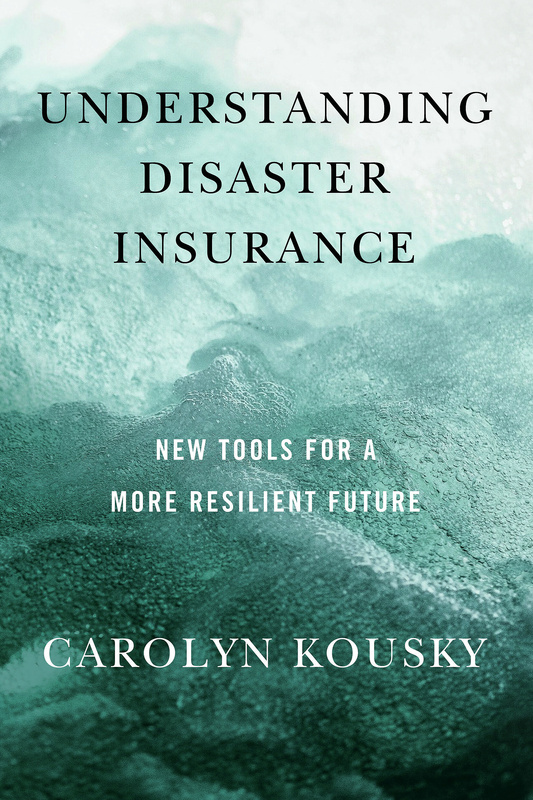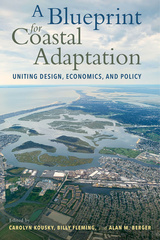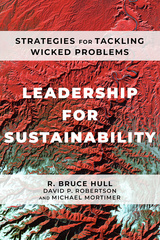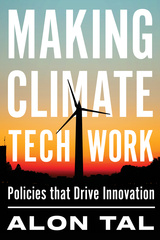Our shopping cart is currently down. To place an order, please contact our distributor, UTP Distribution, directly at utpbooks@utpress.utoronto.ca.
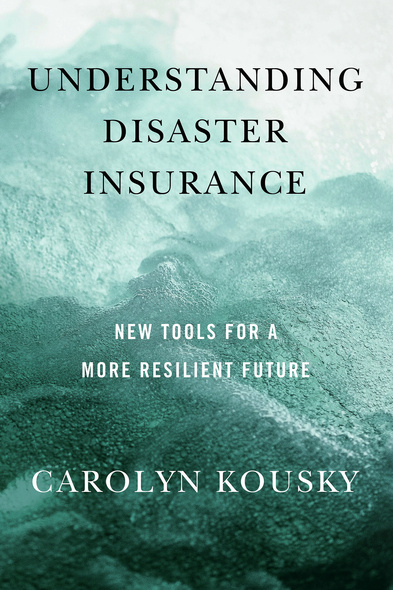
214 pages, 6 x 9
6 photos and illustrations
Paperback
Release Date:13 Oct 2022
ISBN:9781642832259
Understanding Disaster Insurance
New Tools for a More Resilient Future
Island Press
The frequency and intensity of natural disasters—such as wildfires, hurricanes, floods, and storms—is on the rise, threatening our way of life and our livelihoods. Managing this growing risk will be central to economic and social progress in the coming decades. Insurance, an often confusing and unpopular tool, will be critical to successfully emerging from the effects of these crises. Its traditional role is to protect us from unforeseen and unanticipated risk, but as currently structured, insurance cannot adequately respond to these types of threats. How can we improve insurance to provide consistent and sufficient help following all disasters? How do we use insurance not just to help us recover, but also to help us prevent disasters in the first place? And how can insurance help us achieve broader social and environmental goals?
Understanding Disaster Insurance provides an accessible introduction to the complexities—and exciting possibilities—of risk transfer markets in the U.S. and around the world. Carolyn Kousky, a leading researcher on disaster risk and insurance, explains how traditional insurance markets came to be structured and why they fall short in meeting the needs of a world coping with climate change. She then offers realistic, yet hopeful, examples of new approaches. With examples ranging from individual entrepreneurs to multi-country collaborations, she shows how innovative thinking and creative applications of insurance-based mechanisms can improve recovery outcomes for people and their communities. She also explores the role of insurance in supporting policy goals beyond disaster recovery, such as nature-positive approaches for larger environmental impact. The book holds up the possibility that new risk transfer markets, brought to scale, could help create more equitable and sustainable economies.
Insurance and risk transfer markets can be a powerful tool for adapting to climate change, yet they are frequently misunderstood. Many find insurance confusing or even problematic and ineffective. Understanding Disaster Insurance is a useful guidebook for policymakers, innovators, students, and other decision makers working to secure a resilient future—and anyone affected by wind, fire, rain, or flood.
Understanding Disaster Insurance provides an accessible introduction to the complexities—and exciting possibilities—of risk transfer markets in the U.S. and around the world. Carolyn Kousky, a leading researcher on disaster risk and insurance, explains how traditional insurance markets came to be structured and why they fall short in meeting the needs of a world coping with climate change. She then offers realistic, yet hopeful, examples of new approaches. With examples ranging from individual entrepreneurs to multi-country collaborations, she shows how innovative thinking and creative applications of insurance-based mechanisms can improve recovery outcomes for people and their communities. She also explores the role of insurance in supporting policy goals beyond disaster recovery, such as nature-positive approaches for larger environmental impact. The book holds up the possibility that new risk transfer markets, brought to scale, could help create more equitable and sustainable economies.
Insurance and risk transfer markets can be a powerful tool for adapting to climate change, yet they are frequently misunderstood. Many find insurance confusing or even problematic and ineffective. Understanding Disaster Insurance is a useful guidebook for policymakers, innovators, students, and other decision makers working to secure a resilient future—and anyone affected by wind, fire, rain, or flood.
In a world consumed by rising risks, greater insurance coverage promises speedier and stronger recovery once disaster strikes. Carolyn Kousky’s engaging analysis offers a policy roadmap for why and how harnessing disaster insurance will reduce growing threats. This story-filled volume is a must-read for anyone looking to understand the role of insurance in preparing for the looming threats posed by climate change.
In clear prose reinforced by penetrating logic, Kousky explains why and how insurance works when disasters and mega-disasters strike. She dissects the virtues and shortcomings of existing insurance structures and explains how new arrangements, which call on both public and private capabilities, can be created to temper many of the gravest disasters confronting humanity. A clear and insightful book.
Carolyn Kousky is the associate vice president for economics and policy at Environmental Defense Fund. Previously, she was Executive Director of the Wharton Risk Management and Decision Processes Center at the University of Pennsylvania. Dr. Kousky has written extensively on the economics and policy of natural disasters, disaster insurance market, and climate risk management policies. She is routinely cited in media outlets including NPR, The New York Times, The Washington Post, and others. Dr. Kousky is a University Fellow at Resources for the Future and a non-resident scholar at the Insurance Information Institute. She is vice-chair of the California Climate Insurance Working Group. She has a BS in Earth Systems from Stanford University and a PhD in Public Policy from Harvard University.
Introduction
PART 1: Disasters, their Economic Consequences, and the Role of Insurance
Chapter 1: The Costs of an Increasingly Risky World
When Risks Materialize
Securing Financial Resilience
Chapter 2: What Is Insurance and What Is It Not?
The Role of Insurance in the Economy
What Insurance Is Not
The Disaster Insurance Protection Gap
Chapter 3: Insurance Fundamentals and the Challenge of Disasters
How Insurance Works
The Challenges with Insuring Disasters
Chapter 4: Public Disaster Insurance Programs
Public Sector Disaster Insurance
Public Reinsurance and Backstops
Supportive Programming
Chapter 5: Deciding When to Insure
Understanding Risks
Biased Thinking
The Decision to Insure: Beyond Risk Levels
PART 2: The Structure and Operation of Disaster Risk Transfer Markets
Chapter 6: The Structure of Insurance Markets
State Regulation
Policy Distribution
The Chain of Risk Transfer
Chapter 7: The Cost of Disaster Insurance
Catastrophe Models
Premiums and Incentives for Risk Reduction
Insurance Affordability
Market Cycles and Postdisaster Dynamics
Chapter 8: The Insurance-Linked Securities Market
Catastrophe Bonds
The Use of Cat Bonds by the Public Sector
Are Cat Bonds Always a Good Idea? The Case of Pandemic Bonds
Chapter 9: Will There Be Climate-Induced Insurability Crises?
Stress in Markets
Policy Response
PART 3: Innovation to Unlock the Potential of Disaster Insurance
Chapter 10: Improving Disaster Recovery with New Business Models and Products
Difficulties with Recovery
A New Business Model
Parametric Models to the Rescue
Expanding Those with Coverage through Community Policies
Chapter 11: Inclusive Insurance
Microinsurance
Meso-Level Insurance
Sovereign Insurance Pools
Out of Harm’s Way
Chapter 12: Insurance to Lower Disaster Losses
Insurance to Prevent Disasters
Building Back Better
Chapter 13: Insurance for a Nature Positive World
Reflecting the Protection of Nature in Insurance
Insuring Natural Systems
Nature Positive Risk Transfer Structures, Underwriting, and Investments
Chapter 14: The Future of Risk Transfer
Notes
About the Author
Index
PART 1: Disasters, their Economic Consequences, and the Role of Insurance
Chapter 1: The Costs of an Increasingly Risky World
When Risks Materialize
Securing Financial Resilience
Chapter 2: What Is Insurance and What Is It Not?
The Role of Insurance in the Economy
What Insurance Is Not
The Disaster Insurance Protection Gap
Chapter 3: Insurance Fundamentals and the Challenge of Disasters
How Insurance Works
The Challenges with Insuring Disasters
Chapter 4: Public Disaster Insurance Programs
Public Sector Disaster Insurance
Public Reinsurance and Backstops
Supportive Programming
Chapter 5: Deciding When to Insure
Understanding Risks
Biased Thinking
The Decision to Insure: Beyond Risk Levels
PART 2: The Structure and Operation of Disaster Risk Transfer Markets
Chapter 6: The Structure of Insurance Markets
State Regulation
Policy Distribution
The Chain of Risk Transfer
Chapter 7: The Cost of Disaster Insurance
Catastrophe Models
Premiums and Incentives for Risk Reduction
Insurance Affordability
Market Cycles and Postdisaster Dynamics
Chapter 8: The Insurance-Linked Securities Market
Catastrophe Bonds
The Use of Cat Bonds by the Public Sector
Are Cat Bonds Always a Good Idea? The Case of Pandemic Bonds
Chapter 9: Will There Be Climate-Induced Insurability Crises?
Stress in Markets
Policy Response
PART 3: Innovation to Unlock the Potential of Disaster Insurance
Chapter 10: Improving Disaster Recovery with New Business Models and Products
Difficulties with Recovery
A New Business Model
Parametric Models to the Rescue
Expanding Those with Coverage through Community Policies
Chapter 11: Inclusive Insurance
Microinsurance
Meso-Level Insurance
Sovereign Insurance Pools
Out of Harm’s Way
Chapter 12: Insurance to Lower Disaster Losses
Insurance to Prevent Disasters
Building Back Better
Chapter 13: Insurance for a Nature Positive World
Reflecting the Protection of Nature in Insurance
Insuring Natural Systems
Nature Positive Risk Transfer Structures, Underwriting, and Investments
Chapter 14: The Future of Risk Transfer
Notes
About the Author
Index

